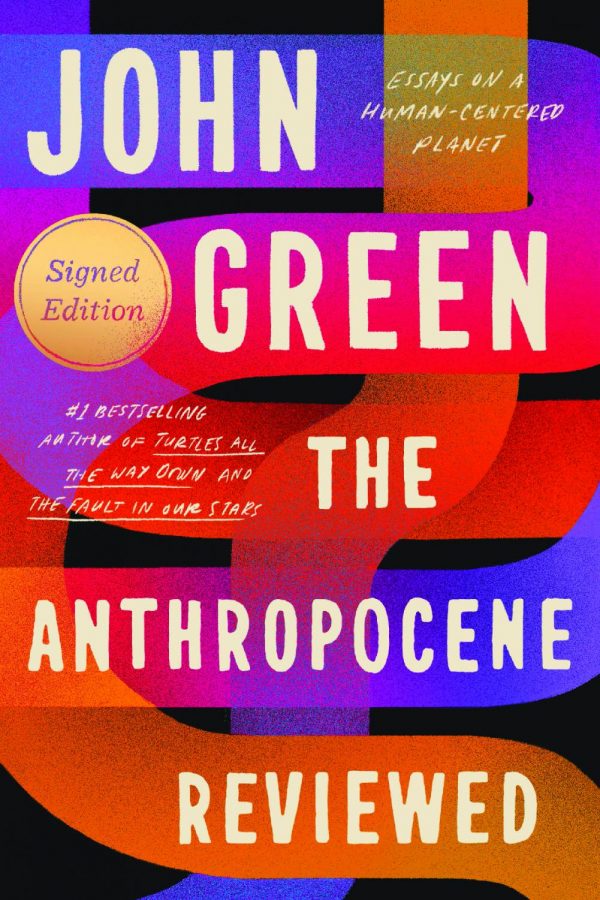The Anthropocene Reviewed
John Green’s latest book, a collection of essays on the world
“The Anthropocene Reviewed” is a beautifully difficult book to explain.
It is a collection of over 40 essays written by John Green regarding the modern world and the current, proposed, geological epoch in which we live – the Anthropocene.
The Anthropocene is defined by the time period in which major geological and geographical changes are driven by humans, rather than being defined by rapid proliferation of oxygen-breathing life or by a meteoric extinction event. The Anthropocene is defined by how we define the world.
Green’s collection of essays is not about the modern applications of geology and geography. Certainly, an essay or two may brush upon the subject.
“The Anthropocene Reviewed” is, instead, a collection of essays regarding the human experience during the Anthropocene.
These are things like the song “You’ll Never Walk Alone,” the Lascaux Cave Paintings located in France, the infection and bacteria of Staphylococcus aureus, the game Monopoly and the Plague.
The book is even more than normal essays, though. They are reviews pinned onto the abstract scale of five stars and rated at the end of each piece.
Green quotes his wife in the introduction as saying, “in the Anthropocene, there are no disinterested observers; there are only participants … and (when they write reviews) they are really writing a kind of memoir – here’s what my experience was eating at this restaurant or getting my hair cut at this barbershop.”
The book first became available in late May 2020, when Green and the world were acclimating to COVID-19 and the realizations that a global pandemic had and would cause major change.
Some of his essays, written in April of 2020, reflect his concerns, his anxieties and his worries about the future of the world. Not only does the book peer into time capsules of the past, but it is one.
In this sense, “The Anthropocene Reviewed” is also a memoir of John Green by John Green.
In each essay of each modern human experience, Green does not suffer us the invisible narrator that will detach itself from its subject matter. He writes about his own experiences with Canada Geese, “Auld Lange Syne,” and Teddy Bears in three essays with titles matching the topics.
Writing a review about a book on reviews would be incomplete if I cloaked myself behind my words, like if Green had written a review of sunsets without mentioning once his experiences of watching our fiery source of life drop below the horizon.
I thoroughly enjoyed “The Anthropocene Reviewed.” I have enjoyed Green’s YouTube presence for years now on his channel vlogbrothers, which he runs with his brother Hank Green, and on Crash Course through various videos.
Originally, this book began as a podcast, but was expanded, written and revised for the printing press, yet it retains the homey atmosphere of Green’s videos.
Yet, for those who do not know Green through his videos, the book brings insight and enjoyment. Green is thorough with his research on his essays, like in describing the history of lawn culture in Europe and the United States.
I have seen some reviews about how “The Anthropocene Reviewed” is a good book to keep by the bedside. I don’t particularly agree with this.
This book is perfect by the bedside, in the backpack, on the go, inside and outside. An essay exists for almost any occasion, from light reading to heavy introspection.
I couldn’t bear to review a book without disclosing some of my favorite parts. In order of appearance, my favorites are “You’ll Never Walk Alone;” “Lascaux Cave Paintings;” “Jerzy Dudek’s Performance on May 25, 2005;” “The Yips;” “Auld Lang Syne;” and “Plague.”
These essays tap into, I believe, deep-seeded connections through time, culture and language and exemplify pinnacle points of human experience in the Anthropocene.
I would give “The Anthropocene Reviewed” five stars out of five stars.




